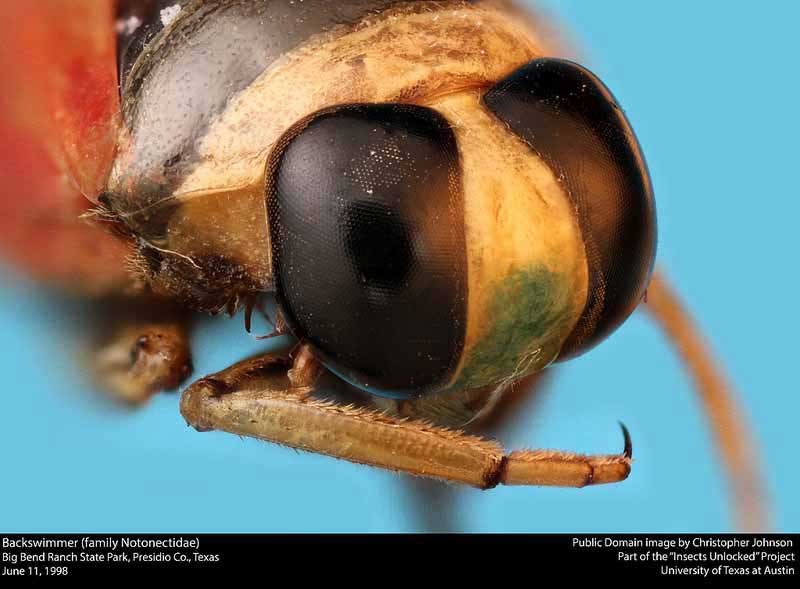
Superregnum: Eukaryota
Cladus: Unikonta
Cladus: Opisthokonta
Cladus: Holozoa
Regnum: Animalia
Subregnum: Eumetazoa
Cladus: Bilateria
Cladus: Nephrozoa
Cladus: Protostomia
Cladus: Ecdysozoa
Cladus: Panarthropoda
Phylum: Arthropoda
Subphylum: Hexapoda
Classis: Insecta
Cladus: Dicondylia
Subclassis: Pterygota
Cladus: Metapterygota
Infraclassis: Neoptera
Cladus: Eumetabola
Cladus: Paraneoptera
Superordo: Condylognatha
Ordo: Hemiptera
Subordo: Heteroptera
Infraordo: Nepomorpha
Superfamilia: Notonectoidea
Familia: Notonectidae
Subfamiliae: Anisopinae - Notonectinae
Name
Notonectidae Latreille, 1802
References
Latreille, P.A. 1802. Histoire naturelle, générale et particulière des crustacés et des insectes. Ouvrage faisant suite à l’histoire naturelle générale et particulière, composée par Leclerc de Buffon, et rédigée par C.S. Sonnini, membre de plusieurs sociétés savantes. Familles naturelles des genres. Tome troisième. F. Dufart, Paris, xii + pp. 13–467 + [1 (errata)]. BHL Reference page.
Berchi, G.M. 2013: Checklist and distribution of the family Notonectidae in Romania, with the first record of Notonecta maculata Fabricius, 1794 (Hemiptera: Heteroptera: Nepomorpha). Zootaxa 3682(1): 121–132. DOI: 10.11646/zootaxa.3682.1.5 Reference page.
Young, E.C. 2010: The taxonomic impediment of unrecognised flight polymorphism in Notonectidae (Hemiptera: Heteroptera). Zootaxa, 2535: 35–48. Preview
Young, E.C. 2010: The water boatmen and backswimmers of New Zealand. Hemiptera: Corixidae and Notonectidae. A research guide. Witherlea Press, Nelson. ISBN 978-0-473-17649-5
Vernacular names
English: Backswimmers
français: Notonecte
日本語: マツモムシ科
Notonectidae is a cosmopolitan family of aquatic insects in the order Hemiptera, commonly called backswimmers because they swim "upside down" (inverted). They are all predators and typically range from 0.5 to 1.5 cm (0.2–0.6 in) in length.[1] They are similar in appearance to Corixidae (water boatmen), but can be separated by differences in their dorsal-ventral coloration, front legs, and predatory behavior. Their dorsum is convex, lightly colored without cross striations. Their front tarsi are not scoop-shaped and their hind legs are fringed for swimming. There are about 350 species in two subfamilies: Notonectinae with seven genera, and Anisopinae with four genera. Members in the former subfamily are often larger than those in the latter.[2]
Backswimmers swim on their backs, vigorously paddling with their long, hair-fringed hind legs and attack prey as large as tadpoles and small fish. They can inflict a painful "bite" on a human being, actually a stab with their sharp tubular mouthparts (proboscis). They inhabit still freshwater, e.g. lakes, ponds, marshes, and are sometimes found in garden ponds and even swimming pools. Although primarily aquatic, they can fly well and so can disperse easily to new habitats.
Common backswimmer (Notonecta glauca)
The best-known genus of backswimmers is Notonecta – streamlined, deep-bodied bugs up to 1.6 cm (0.6 in) long, green, brown, or yellowish in colour. The common backswimmer, N. glauca, is widespread in Europe, including the United Kingdom where it is known as the greater water boatman.[3] Another of the same region, N. maculata, is distinguished by its mottled brick-coloured forewings.
In contrast to other aquatic insects that cling to submerged objects, Anisops deanei uses a unique system to stay submerged: using the extra oxygen supply from haemoglobin in their abdomen, instead of using oxygen dissolved in the water. The size of these air bubbles, which provide buoyancy, changes as the nitrogen dissolves into the blood and the oxygen is used in respiration. This allows for regulation of the size of the air bubbles and their concentration of oxygen.[4][5]
Notes
Randall T. Schuh; James Alexander Slater (1996). True Bugs of the World (Hemiptera:Heteroptera): Classification and Natural History (2 ed.). Cornell University Press. pp. 127–129. ISBN 978-0801420665.
Julianna Freires Barbosa; José Ricardo Inacio Ribeiro; Jorge Luiz Nessimian (2012). "A synopsis of Martarega White, 1879 (Insecta: Heteroptera: Notonectidae) occurring in the Brazilian Amazonia, with descriptions of three new species". Journal of Natural History. 46 (17–18): 1025–1057. doi:10.1080/00222933.2011.651645.
BBC Science and nature factfiles: Water boatman, common backswimmer Retrieved on 2008-07-26
physorg.com: Gold Strike in Science World Retrieved on 2008-07-26
Diving insects use buoyancy vests New Scientist 2006-04-11 p.19 Retrieved on 2008-07-26
References
Chinery, M. (1986). Collins Guide to the Insects of Britain & Western Europe. Collins. ISBN 0-00-219137-7.
Fitter, R. & Manuel, R. (1986). Collins Field Guide to Freshwater Life. Collins. ISBN 0-00-219143-1.
Hungerford, H. B. (1933). The genus Notonecta of the world. U. Kansas Sci. Bull. 21: 5-195.6+516+2kkig
Painful bug bite, Williams 1980, Hawking & Smith 1997[dead link]
Notonectidae, Australian Freshwater Invertebrates
Retrieved from "http://en.wikipedia.org/"
All text is available under the terms of the GNU Free Documentation License

